BAL Spotlights Series

Dana Parish is a singer/songwriter based in New York City, signed with SonyATV. She is renowned for her captivating vocals and emotionally charged performances. Her debut single, ‘Not My Problem,’ from her album Uncrushed, reached the #23 spot on the Billboard charts, establishing her as one of the highest-charting independent artists in history. She notably contributed two songs, ‘Thankful’ and ‘Always be Your Girl,’ to Celine Dion’s album Loved Me Back to Life. Additionally, her song ‘Someday I’ll Fly’ by G.E.M. became a #1 hit in China. Another one of her compositions, ‘Broken Ones,’ performed by Jacquie Lee, a finalist on Season 5 of The Voice, achieved chart success. A fearless advocate for the Lyme community, Dana champions the cause of individuals suffering from Lyme and tick-borne diseases. In May 2016, she delivered a heartfelt performance of ‘Pull You Through’ at LymeAidⓇ, Bay Area Lyme’s annual fundraising event, contributing to raising more than $815,000 for Lyme disease research. In 2021, she co-authored Chronic: The Hidden Cause of the Autoimmune Pandemic and How to Get Healthy Again with Steven Phillips, MD. Dana hosts the Ticktective podcast and video series for Bay Area Lyme Foundation and is a member of our advisory board.
In this interview, Dana Parish discusses her life before being diagnosed with Lyme disease and the challenges she faced in getting accurate diagnosis and correct treatment. She talks about her career in the music industry before she was bitten by a tick. Dana shares her experience with being misdiagnosed and the physical and mental symptoms she experienced. She also discusses the importance of raising awareness about Lyme disease and advocating for better treatment options. Dana also touches on the similarities between persistent Lyme disease and Long Covid and the potential for overlap in research and treatment. She emphasizes the importance of being your own advocate and demanding proper treatment. Finally, Dana shares her thoughts on the current protocol for treating tick bites and the need for aggressive and early treatment.
“I just took the position that these doctors were idiots, and they were wrong and that one day I would get better, and I would go on to do something with my knowledge—if I got to recover.”
– Dana Parish
Jo Ellis: Hello Dana! You’ve been hosting Bay Area Lyme’s Ticktective podcast and video series for a while now and have built a big following for the program. Many people follow your Lyme advocacy and awareness work through social media, but I thought people who tune in may not know how you went from being a successful singer/songwriter to becoming a huge patient advocate in the Lyme community. We thought it’d be great to take the opportunity to let you talk about your own Lyme journey.
Dana Parish: Absolutely. Thank you for inviting me!
Jo Ellis: I’d like to start out by asking what your life was like before Lyme. Can you share what you were doing, what kind of work you were engaged in?
Dana Parish: I went to a conservatory and right out of college I got my first music publishing deal to write songs with a company called Famous Music, which was then the music division of Paramount. It was a real thrill to become a full-time artist in my early twenties. I began writing a lot of songs and making albums and recording and playing because I’m a singer as well. I spent a lot of time traveling and singing and writing and being in the recording studio, working with many, many artists from all over the world. And I absolutely loved it. I felt so fortunate.

In 2014, I had written two songs for the new Celine Dion album. I wrote them for her, but I didn’t at that time know that she was going to be recording them. I sent the first song to her husband, René Angélil, in a blind email. I got his email address from my manager at the time, and it was this nondescript email address—my friends in the music business joke that it was info@celinedion.com—and I literally cold emailed him that I wrote these very personal songs for Celine. The first song was called ‘Always Be Your Girl.’ It was a love letter to her children. She had had a really hard time conceiving and went through many rounds of IVF, which she had talked a lot about publicly. Anyway, I wrote this song for her with my husband, Andy. I had heard they were looking for songs for her new album and that they had already listened to hundreds of songs and didn’t find anything, and they were only going to do a couple of originals, and the rest were going to be covers.
I knew in my heart if she heard this song, she was going to want to record it. And that’s what I said in the email, really never expecting to hear back because her husband didn’t know me. It’s hard to explain how difficult getting songs on records like this is when every single writer from every single country is competing for 12 spots on an album. The next morning, I woke up to an email from his and Celine’s assistant saying that they had heard ‘Always Be Your Girl’ and loved it and asked me to provide my phone number. René wanted to call me right away and put the song on hold and talk to me about my music. I couldn’t believe it. I sent my number and about an hour later he called, and we had such a great conversation, and he said, “What else do you have?”
I sent him a second song that we had written for her called ‘Thankful,’ and he asked me to overnight the song on a CD, because—as he put it—“We’re old school. We like to listen in our limo on a CD. We don’t really like MP3s and digital recordings as much.” I said, “No problem.” He gave me their address and I FedExed the CD, and the next day he called and said, “She wants this song, too. We have listened to 300 or 400 songs, and we have not found anything except these two songs.” In the music business, the way things worked at that time—things have rapidly changed due to streaming—there were only a couple of huge international records made each year. It could be someone like Madonna, Mariah Carey, Prince, people like that. Iconic artists.
Well, Celine is on that short list. So that drew attention. My deal with Paramount was over—actually Sony ended up buying them—and I was shopping for an entirely new deal because I had fulfilled my contract with them, and suddenly, there was a bidding war for my publishing. I signed a very exciting new deal with Sony directly. All the things I had worked for had culminated in this moment, in this particular deal. I was thrilled with the team I’d be working with. I was thrilled with the artists on the list that I was going to be working with.
Then I went to a wedding in New Jersey as we were negotiating the deal, and I got a tick bite. I came back to Manhattan a couple of days later and I had a very severe flu-like illness and a crushing head and neck ache. It was a July 4th weekend wedding. And you hear about the ‘summer flu,’ but most people don’t realize that a summer flu is very, very frequently Lyme disease.
“You hear about the ‘summer flu,’ but most people don’t realize that a summer flu is really very, very frequently Lyme disease.”
– Dana Parish
A couple of days later, I woke up and I saw a rash on my shoulder and a little bite in the center, and I walked straight over to urgent care. I knew it was Lyme. I didn’t know what it meant, but I knew that I had it and I needed antibiotics. It was a Saturday. They said, “You have Lyme, not a big deal. You caught it really early.” They prescribed three weeks of doxycycline—that’s an antibiotic—and said, “You’re fine, you’ll be fine.” But they said, “Don’t Google it because you don’t want to look at these crazy Lyme people.” And I didn’t know what that meant. I thought that was such a strange comment. I had a very strong spidey sense that this was bigger than I was being told. This was more serious than I was being told. And I found the suggestion that I shouldn’t try to educate myself to be very concerning and strange.
Jo Ellis: Did you see the tick that bit you?
Dana Parish: When I was at the wedding, I had a really itchy shoulder. This ended up being the tick. And it’s key to understand that I am pretty freckly. I went into the bathroom at the wedding and looked at my shoulder. I did actually see the tick, but I thought it was a freckle. It was so flat, and it looked like every other freckle that I had. It was very, very tiny. People need to know that these ticks can be the size of a poppy seed. They don’t look like big scary spiders, they’re not these nightmarish-looking things. The light was really dimmed because they were creating the nighttime vibe. So, I actually did see it, but I didn’t recognize that it was a tick until I found the rash about five days later.
Five days later, I got out of the shower, and I saw the bite in the center of a very faint rash. It wasn’t a standard bullseye rash. That’s a really important thing that I try to remember to say is that the typical CDC website rash is not actually the norm when people get Lyme. A lot of times the rash looks like mine. It’s a faint pink roundish rash, and you could easily miss it. It could be in an area of your body that you don’t look at, say your scalp or on your back. People get them on the back of their knees all the time.
But the other thing is, is that many strains of Lyme and other tick-borne diseases don’t produce any rash. So, for the most part, people are getting these bites and they’re painless. But people are getting infected by multiple pathogens at once—not just Lyme, and they don’t know why they suddenly become so chronically ill. I consider it a gift that I saw the rash. I grew up in New Jersey. It was known to me only that the rash was a symbol of Lyme and that it needed to be treated. But I didn’t know anything beyond that at that time. It was a complete shock to find out everything I learned subsequent to that initial bite.
“Many strains of Lyme and other tick-borne diseases don’t produce any rash. People are getting these bites and they’re getting infected by multiple pathogens at once, and they don’t know why they suddenly become so chronically ill. I consider it a gift that I saw the rash.”
– Dana Parish
Jo Ellis: Can you talk about what happened after you got the first three weeks of doxycycline and you were in the early phase of treatment during the acute stage of the disease? What happened next?
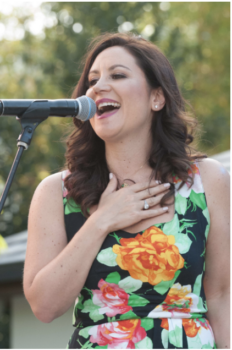
Dana Parish: Yes. I took the three weeks of doxy and my initial symptoms—the flu-like stuff—resolved somewhat quickly, although I remained very fatigued. My brother got married about two or three weeks into that August and you can see in the pictures that my eyes are kind of red and glassy. I looked unwell. I didn’t feel terrible, but I felt very fatigued. And I should point out that the initial flu-like symptoms are going to resolve with or without antibiotics, so people think, “Oh, well, I took that and I’m better because I don’t feel fluey anymore,” but that’s actually irrelevant. That’s going to go away anyway. And then what you’re left with is Russian Roulette. I had fatigue, some mild light sensitivity—which I now know is a classic sign of Lyme– but nothing much else. I went on with my life. I was working, writing, and traveling.
However, sometime in early October—which was about three months after the bite, and about two and a half months after I finished the three weeks of doxycycline—I woke up and my breast was swollen and extremely painful. My grandmother died in her forties of breast cancer so I know that there is a kind of breast cancer called inflammatory breast cancer that can show up like that. I was really scared. I went over to my internist. I’d been her patient for about 12 years, and I liked her a lot. She took one look and was clearly panicked. She walked out of the room and called an oncologist–a breast specialist–and got him to see me that day. He examined me and said, “Listen, it is swollen, and it is really weird, and I can see you’re in pain. However, it’s not cancer, and I just do cancer, so I can only tell you this isn’t cancer. I don’t know what it is, but it’s weird.”
That was the first sign that something was really wrong. Shortly after, I was working out at the gym in my building, and I was doing the elliptical. After the workout, my arms stopped working and I became weak, and then I became extremely light and sound sensitive. I had a very sudden onset of extreme anxiety, depression, insomnia, and eventually suicidal, intrusive ideation. I lived on the eighth floor, and I just couldn’t stop thinking about jumping out the window, even though I really didn’t want to. I had never experienced any kind of intrusive thoughts like that before, or any kind of OCD or any kind of extreme anxiety and depression. I was afraid to be alone. I was hyperventilating all the time.
“I had a very sudden onset of extreme anxiety, depression, insomnia, and eventually suicidal, intrusive ideation. I couldn’t stop thinking about jumping out the window. I had never experienced any kind of intrusive thoughts or OCD or extreme anxiety and depression before. I was afraid to be alone. I was hyperventilating all the time.”
– Dana Parish
I also had a fibromyalgia-like presentation. I had extreme pain in my arms and my chest wall, my ribs. I went to a sports medicine doctor who told me that I was just weak and to lift weights, and I lifted weights with him in his office. The next day I couldn’t lift my arms at all. We now know in the face of Long Covid that there’s a very common presentation called Post Exertional Malaise or PEM. People know a lot about that now, but at the time, it wasn’t something that anybody in the western world of medicine was even aware of in my view.
By this point I had been tossed around to at least a dozen doctors from three infectious diseases to internal medicine to allergists because I had rashes all over my body that were burning. I had a lot of symptoms that were objective—that means a doctor can actually SEE them. And yet still, there was a sense that I got from them that they thought this was stress. I told them all repeatedly that it was NOT stress. It was so obvious to me that it wasn’t stress. It was an absolutely appalling and ridiculous notion! I couldn’t have been happier when all this happened. I was at the prime of my life! I was very happily married; I loved living in New York; I loved traveling back and forth to California and Nashville; doors were wide open for me in my music career; I had literally nothing to complain about and everything to be grateful for! And then this happened.
There’s a notion that patients are making this stuff up and that’s a completely idiotic, uneducated take. Clinicians or scientists who make these statements are to be ridiculed for not having the ability to critically evaluate something they don’t initially understand. It’s not coming from a sincere place in my view. It stems from dogma—a lack of common sense—and a lot of politically motivated influence. They may not even recognize that the influence they’ve succumbed to is from nefarious actors at the top of the public health food chain, actually. These people absolutely know that Lyme and other tick-borne diseases are chronic and causing an enormous amount of illness. This has been published for four decades! They can’t rewrite history, but they certainly do their best to gaslight doctors into not looking at the literature, by telling them the science is settled, and that chronic Lyme is rare or doesn’t exist.
I never wavered in my belief that there was an organic process happening head to toe. I was unshakeable, and I knew they were all wrong. I was demoralized by it, but I was still completely unmoved by it. I just took the position that these guys were idiots, and they were wrong and that one day I would get better, and I would go on to do something meaningful with my knowledge. And that’s pretty much what happened.
“I never wavered in my belief that there was an organic process happening head to toe. I was unshakeable, and I knew they were all wrong.”
– Dana Parish
Around Christmas time, which was several months later, my worst symptom appeared. I was already really debilitated. I couldn’t work anymore. I couldn’t sing anymore. I couldn’t be in the studio. I had severe cognitive dysfunction at that point. People call it ‘brain fog’. I don’t love the term brain fog because I think it really minimizes what it is. I couldn’t tell my left from my right. I couldn’t tell my doormen apart after being in the same building for 11 years and knowing them very, very well, and being very friendly with all of them. I couldn’t remember any of their names. That’s how severe it was.
I woke up one day in December around the Christmas holidays, and I couldn’t breathe. I was extremely short of breath. I went back to my internist, and she walked me down to cardiology, and they gave me an echocardiogram, and I was in heart failure. I remember they paged her to come back. I was just with the tech, but I couldn’t breathe. And I’m lying on the table. I’m this young person crying, lying on the table gasping for air, getting this echocardiogram, and I’m pretty sure I’m dying at that point, and I don’t even really know why. And she comes back and she’s holding my hand and she’s looking at the report, and I could see she is just confounded. Nobody understands why this is happening to me, and nobody really knows what to do because nobody knows what the cause is. Now I’m going back to infectious disease saying, “But what about the tick bite? What about the tick bite? The only thing that’s new is that bite.”
Jo Ellis: You were always saying this?
Dana Parish: I was saying it to anybody who would listen. I was saying it to every doctor, doctors who were treating me, doctors who were friends or family, anyone who I thought could send me to the right care. I kept going back to it, and they kept shutting me down and saying, “No. You were treated with three weeks of doxycycline.” I saw this infectious disease doctor, (it’s in our Chronic book, and I talk about it all the time) and asked him, “How do you know that the Lyme has been cured?” And he said, “Because I went to medical school.” And then he said, “Because Lyme is killed 100% of the time in the test tube with doxycycline.” Well, that’s actually not even correct. Additionally, what happens in the test tube does not relate necessarily to what happens in the human body. So, he was wrong on both fronts.
I later learned that Lyme is not even a hundred percent killed in the test tube, and that months to even years of antibiotics still has been documented not to eradicate Lyme in humans and animals. There was a very significant study out of Stony Brook that Dr. Joseph Burrascano, has talked publicly about where they treated all their EM rashes. That means the initial rash stage for patients: the Erythema Migrans is a technical name for the rash. They treated all these patients with three weeks of doxycycline, and then they tested their spinal cord fluid, and literally none of them had cleared the infection. That was a very early treatment that they were given. So, there’s this dogma about how early treatment makes Lyme very treatable and curable. That’s absolutely not necessarily true. Johns Hopkins has a study we put in our book and that I’ve talked and written about many times where approximately 36% of people who are treated with three weeks of doxycycline or two weeks of doxycycline go on to have continuing symptoms.
If you think about it logically, it makes no sense that if you have symptoms for 21 days and it’s assumed to be Lyme, that on day 22, it’s something completely different, and now we’re giving you a different diagnosis of autoimmune disease or psychiatric disease or both. Or it’s in your head or you’re a malingerer or whatever it would be. So yes, I was going back and asking everybody about tick-borne diseases. I was asking if they knew anybody who specialized in Lyme, because I heard that there was such a thing as Lyme doctors. They refused to even talk about that with me and said that Lyme doctors are not credible and that I would have to stick with infectious diseases doctors because they are the ones who treat Lyme—but that was terrible, inaccurate advice. The ID docs were shockingly clueless and dogmatic. I was stunned by their demeanor and lack of curiosity. NONE of them checked for other infections, or disclosed to me that ticks are cesspools and carry a multitude of viruses and bacterial infections and parasites. Nobody had told me any of this, and they failed to consider, in addition to Lyme persisting, that these other infections were a very obvious potential cause of my ongoing symptoms.
So, I started to look for a Lyme doctor and researching all this stuff on my own. In the age of Covid, there is this oft-repeated mainstream narrative that patients should not “do their own research.” It’s used to sow division, to shame people who have earnest questions and concerns. And I strongly repudiate that nonsense. DO NOT LISTEN TO THAT. That is borne straight from the information warfare playbook, whose intent is to direct the public to one narrative, which often ends up hiding the truth.
To my point, I’m now going on the CDC website over and over and over, and it keeps saying there is a faction of people who continue to have symptoms after their initial treatment, but don’t worry, it goes away generally in a few months. Now, it’s been many months, and I’m in heart failure, so I’m actually getting much, much worse. And my life is getting much, much smaller. I’m pretty much homebound at this point. And the CDC is telling me that most people just miraculously get better over time. That’s simply not true, and they know it. It is common that people get worse and not better over time. We are seeing it now with Covid as well, and we know Covid is also a chronic infection, and history of SARS1 tells us that the majority of people with lingering SARS symptoms actually got significantly worse over time.
So, I had some friends that had heard about Dr. Steven Phillips. I had explored many options in Manhattan but wanted to go to somebody in the hotbed of Lyme, and a friend recommended that I see him. He evaluated me for many infections that can be spread by ticks. So, he knew when he met me clinically that my symptoms spoke to ongoing Lyme, but also to another infection called Bartonella.

He started treating me with a rotating course of pulsed antibiotics, and within about two months, my heart failure was completely gone. By the way, I had also seen cardiologists in the course of my five-month odyssey before finally seeing Dr. Phillips. I had also started a Chinese medicine protocol called the Zhang Protocol. I’m very, very glad I did that, too. When I met Dr. Phillips, I was a bit nervous as this Yale-educated internist I had seen in a video before I went to him was intimidating. He was so serious and so smart. My impression was that he was Western in his way of thinking. And I said, sheepishly, “I want to do this Chinese protocol, too.” And he was like, “That’s great. It’s really good. It’s helped a lot of my patients. I’m totally fine for you to do it. I just need you to keep me apprised of exactly what you’re on so that we’re careful about not mixing things that shouldn’t go together.”
I was really relieved to hear that. And my anxiety, depression, all my psychiatric stuff and my neurologic stuff fell away gradually. The anxiety and depression got better within a couple of months. And I would say that over the course of eight months of treating with both protocols, I got to about 97% better. People always want to know what helped me the most and I’d say pulsed tetracycline, pulsed liposomal artemisinin, and this herb that Dr. Zhang uses called Houttuynia. There are many ways to skin a cat and that was mine.
“I was on a rotating course of pulsed antibiotics, and within about two months, my heart failure was completely gone.”
– Dana Parish
Another interesting thing was that I had had interstitial cystitis my whole life, probably since I was five years old and it went away, too. People now—because they know so much about Covid and they hear so much about immunity and antibodies—think you must be able to get immune to Lyme. That is not how Lyme works. You do not have immunity to Lyme. You can keep getting it over and over and over and over and for your entire life. Some strains do things like stay in the skin and don’t go anywhere, and some go to your heart like with me, or go to your bladder.
Jo Ellis: Do you think you might have been bitten and already contracted Lyme when you were much younger? Before the wedding tick-bite incident?
Dana Parish: Yes! As I mentioned earlier, I grew up in New Jersey, so there’s no question that I was exposed. I remember being a little kid and pulling a tick off of my thigh. And we didn’t know anything in those days, and it wasn’t even something I would’ve told my mom or dad because I didn’t think it was a big deal.
I loved nature and hanging out, hiking, and doing fun stuff like walking through the woods and hiking trails with my friends. So, it wasn’t something that was on my radar at that time, and I wasn’t an overtly sick kid, but I did have interstitial cystitis, and the symptoms would wax and wane, as most Lyme patients will describe. There’s always a migrating waxing/waning element to this illness, and that is a clue and a hallmark of Lyme. So, I still had the cystitis, and I was always doing different treatments and trying to manage it, and it would go into remission for years with Chinese medicine or acupuncture and stuff, and it would come back. It was very persistent.
“There’s always a migrating waxing/waning kind of element to this illness, and that is a clue and a hallmark of Lyme.”
– Dana Parish
When I did my Lyme treatment, the cystitis went away for the first time. I wasn’t aware of my bladder anymore. I didn’t have this constant nagging that it was inflamed, or as one urologist described, “it looks like a bloodshot eye.” It’s actually kind of amazing that so many people are walking around with these conditions that are infections and they have no idea, and there are really not a lot of good treatments for a lot of them. They mostly suppress symptoms and often have unwanted side effects. The best-case scenario is stumbling onto this like I did, and fundamentally treating the root cause.
Jo Ellis: Am I right in thinking this would’ve been around 2015? You are seeing Dr. Phillips, and you start to get answers and get effective treatment. That was the turning point and the beginning of your journey back to a better health status, correct?
Dana Parish: Yes, 2015. By that summer, I was back in the studio making a record with Idina Menzel. We had written a bunch of songs for her and with her, and by June or July, we were in the studio together, and I was still very fatigued. I only had a certain amount of energy per day. Again, people talk about this a lot with Covid, too. I could work from noon to 4:00 or 5:00 pm or so, and then I had to go home and Idina would continue working into the night with my husband, because it’s pretty typical that you do long nights in the studio when you’re making records. It was super fun to do that. We got a call from Babyface’s assistant around this time to start a writing session one night at midnight! Kind of hilarious to the outside world, I assume. But I just wasn’t able to at that point. So, I would go home early. I would do my part and write and get these songs together with Idina and my husband Andy, and I would go home and go to sleep. I incrementally started to do more, but I pulled back whenever I felt fatigued.
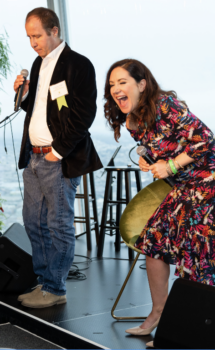
I got very good advice from the Zhang clinic—from Dr. Zhang and his partner, Phyllis, who was an enormous gift to me, a true lifeline. The advice was simple, but critical to my recovery: When you are tired, rest, do not push yourself. This is not the kind of disease that you can push through. When you push, you pay for it. And that was 100% true in my case. They also told me, “Don’t watch the news and don’t watch anything stressful. Go home, lie on the sofa, and watch dumb TV shows. Watch the house decorating shows and the garden shows, and the travel shows, and mindless things that are entertaining and light.” That was great advice because I was living in Manhattan amongst the most hard-charging people on earth who are overachieving at every hour of the day. Before Lyme I was like that, too. And then all of a sudden, I couldn’t handle watching the news.
Jo Ellis: You had to do a head spa.
Dana Parish: Exactly. But it was really meaningful and helpful.
Jo Ellis: What was the thing that tripped you into your Lyme activism phase?
Dana Parish: Rage. Absolute rage at what I now know is just a complete rewriting of science, of history, of the extent of the institutions who covered up chronic Lyme. Rage about collusion by the CDC, NIH, Health and Human Services, and at tons of academic institutions that have conflicts of interest in patents that they own to our very poor tests and future vaccines. They know that admitting Lyme is chronic makes delivering a safe and effective vaccine unlikely, and so they continue to block better tests so that we have no idea who really has Lyme and who doesn’t. And people should know that the first Lyme vaccine, LYMErix, was quietly pulled from the market after causing so much harm. There is a false narrative that there was low demand. That is untrue. I refer people to author/reporter Pam Weintraub’s incredible account of the debacle, which she covered in her book, Cure Unknown.
So, there is a lot of chronic Lyme literature. Most doctors aren’t even taught about this, but when they go back through and look at it and go down the rabbit hole, they’re often shocked by what they learn, which is that the Infectious Diseases Society of America (IDSA) originally did incredible work on Lyme being chronic, how it’s congenital, meaning passed from mother to baby in utero. And so, we have data back from the 1980s that show fetal demise, that show the Lyme spirochetes in the heart and spleen and liver of fetuses.
We know that this is congenital. We know it can be chronic, it can persist. We know there can be long periods of latency. That’s what happened to me when I had a few months of latency, but it can actually be months to years. And Dr. Allen Steere published that. And the establishment did a 180 around the time that the first Lyme vaccines came out. The whole narrative changed, where suddenly Lyme was “easy to diagnose and cure.” They inexplicably, falsely claimed it wasn’t chronic. There were incredible, comprehensive articles about chronic Lyme, by the way, that came out before all this in the LA Times and the New York Times. Lyme was on the cover of Newsweek Magazine in May 1989 and a doctor was quoted stating that if it wasn’t for HIV, Lyme would be the most fearsome and fastest spreading infectious disease on earth. So, you go back and read these things and it was all known, and then everything came to a halt, and the entire landscape became polluted by covering up the truth about Lyme.
It was a seismic shift. And when I learned all of this, and when I looked at all of this myself and spoke to some clinicians and researchers, I was absolutely appalled because I lived it. And now I understood something that I needed to share with the world. I saw so much suffering, and I shared it with my friend who was writing for the Huffington Post at the time, and she said, “I want to introduce you to the editor. This is a crazy story, and I think that people will be really helped by you telling the story. I think you have to do that.” I wrote my story, and I really expected nothing much to come of it. I thought maybe 50 people would read it. And it ended up going viral, and it was called something like How 12 Top New York City Doctors Missed My Lyme Disease.
I got a call from the editor saying, “This did really, really well, and you should keep doing this. Why don’t you interview some celebrities with Lyme? Why don’t you interview some doctors? Why don’t you just keep writing about it?” Then I interviewed Kris Kristofferson’s wife about his Alzheimer’s that was 30 years in the making that caused him to go stop performing and stop traveling. When he was finally diagnosed with Lyme, he took some antibiotics and a couple of other treatments, and all of a sudden, he’s back on the road. He gets a good part of his health, brain, life back. Miraculous story. Daryl Hall from Hall and Oates has a great story. I interviewed him about his Lyme. He has a lot of wisdom to share.
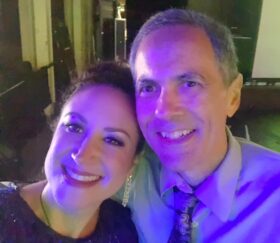
I interviewed Ally Hilfiger. I interviewed Dr. Neil Spector, who was the famous oncologist from Duke that lost his heart to Lyme. He, like me, was undiagnosed for a period of time, but he was undiagnosed for much longer, and he was in such severe heart failure that he needed an emergency transplant. And his life’s work, which was developing life-saving therapies and cures for breast cancer, turned to this subject of Lyme and Bartonella, which was the other infection that I had. And he compared them. He said, “Lyme is the infectious disease equivalent of cancer.” So, I interviewed him, and that was a great interview. If anybody who’s reading this wants to Google it, it’s in the Huffington Post and it’s well worth your time. And there are a lot of references in there. And if you have doctors or family members who don’t understand what’s going on, this is a really good way to educate them.
So, I did this column, and it was a lot of work, but I really enjoyed it. It was extremely rewarding. I was getting letters literally from all over the world thanking me. People were taking the information in. They were getting help. I got a letter from a nurse in Ghana, Africa, his name is Joe. I loved him. And we stayed in touch. We interviewed him for the Chronic book. He had very similar symptoms to me. He took my column to some doctors in his hospital, and he emailed me and asked me for a protocol that Dr. Phillips was treating me with. And I sent it to him, and I sent him the ILADS guidelines, and they treated him and he got better. One of the most fascinating things I learned from him is that there are these prayer camps all over Africa.
If you Google them and you’ve never seen this before, it’s shocking and amazing. Thousands of people with psych issues are sent. They are thought to be possessed, and their families send them to these prayer camps to get better. He was in one, and he said to me, “I think all of these people have Lyme.” And we were speechless. We were really just taken aback and awed by all of this.
I stopped writing for the Huffington Post column because I felt I had completed my album, so to speak. I said what I needed to say. And I then became an advisory board member of Bay Area Lyme, which has been a true highlight of my life and career. And at some point, a friend of mine who is an author said: It’s time for you to write a book and you should write it with Dr. Steven Phillips, and I’m going to make that happen.
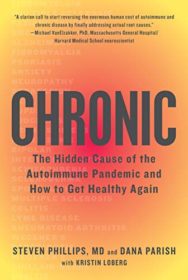 I said, “That’s crazy. We’re not writing a book. I can’t imagine we want to write a book.” Well, lo and behold, she took a bunch of press that we had done together, and the Huffington Post column, sent it around with this great letter saying how desperately this information was needed. And then we had multiple agents who wanted to work with us, and then we wrote the proposal for the book, and we had a bidding war for the book, which was the wildest surprise of my life. And that’s the story. That’s how that all happened. The book came out right in the middle of the pandemic. So, we were able to add a chapter about Covid and make the comparison, which is very, very, very deep medically, and politically very similar, very, very similar. So yes, it’s been quite a journey.
I said, “That’s crazy. We’re not writing a book. I can’t imagine we want to write a book.” Well, lo and behold, she took a bunch of press that we had done together, and the Huffington Post column, sent it around with this great letter saying how desperately this information was needed. And then we had multiple agents who wanted to work with us, and then we wrote the proposal for the book, and we had a bidding war for the book, which was the wildest surprise of my life. And that’s the story. That’s how that all happened. The book came out right in the middle of the pandemic. So, we were able to add a chapter about Covid and make the comparison, which is very, very, very deep medically, and politically very similar, very, very similar. So yes, it’s been quite a journey.
“I think that the future of medicine has to look at chronic pathogens as playing an enormous role in human health and disease, everything from heart, vascular and rheumatic disease, to multisystemic diseases that we think of as “autoimmune,” having no known cause. Well, everything has a cause and a lot of it is infectious, and we already know that.”
– Dana Parish
Jo Ellis: I read the book and I literally forced friends of mine to read it and have given people copies. I’m always talking about your book, and I say to people, “This should be on every medical student’s mandatory reading list in medical school.”
Dana Parish: Thank you.
Jo Ellis: You have mentioned some of your heroes as you’ve been relating your story, one of whom is obviously Dr. Neil Spector, and another would be Dr. Steven Phillips. Who else are your heroes within the Lyme community, the people who you think are really out there, really pushing for acknowledgement, for validation, for change, for recognition, for money? I’d like you to try to pick some highlights.

Dana Parish: Oh my gosh, it is a long list. And I mean, I would start by saying Linda and the entire staff at Bay Area Lyme Foundation, because of the research that we fund, the patient-focused decisions we make. It is critical and crucial to moving the field forward, not just to help researchers keep getting their grants to put effective therapies and information in the public domain, but to fundamentally help patients. So that’s one that stands out. That’s huge to me. I would say Dr. Monica Embers, she’s a wonderful researcher from Tulane. Dr. Charlotte Mao, who was a pediatric infectious disease doctor who was specializing in pediatric HIV, and turned her attention to tick-borne diseases where she was the head of the Dean Center at Harvard until she decided to retire sometime in the middle of the pandemic. And she’s now on the Bay Area Lyme science committee and doing other important things in regard to Lyme+.
Also Dr. Ed Breitschwerdt, Dr. Robert Bransfield, Sue Faber, Kris Newby, Pamela Weintraub, The Cohen Foundation, the Fairbairn family who are incredible philanthropists and fund brilliant, out-of-the-box work to help Lyme patients, which extends to covid as well. And they’ve been big supporters and champions of Bay Area Lyme. Lyme Connection, Dr. Kenneth Liegner, Dr. Richard Horowitz, all the people on the front lines. Lorraine Johnson at lymedisease.org. Melissa Bell, who has Florida Lyme Disease Association and Lyme Disease Challenge; Olivia Goodreau from LivLyme Foundation, the Lyme Light Foundation. It’s amazing. I mean, there are just so many. Brandi Dean. But of course, I think a major focus is Neil’s lab. Neil Spector’s lab (now the Haystead Lab at Duke University) is continuing this work and making great strides in ways that we have not seen before. I think that’s critical. That’s been crucial. It was his dying wish to see this through, that this be his legacy, and I am very proud of the support Bay Area Lyme is giving to make this happen.
Jo Ellis: Based on where we are now, when you look back and reflect on your personal struggle, the struggle of the Lyme community, Lyme patients, and the suffering people endure with these diseases, what is your vision for the future of Lyme, the future for Lyme patients? How do you think things are going to unfold based on what you know now?
Dana Parish: Based on what I know now, I think that there are people from outside the field of Lyme who didn’t come into this with a lot of dogma, immunologists like Akiko Iwasaki from Yale, who is now going to be heading up an institute there to treat and to study chronic Lyme. And I think that Long Covid has awakened a large number of researchers outside of the field of Lyme to the fact that they misunderstood or overlooked its role in chronic and autoimmune diseases. By the way, I should have mentioned Amy Proal. She and her team at Polybio are making a huge difference in Lyme. She’s one of the premier scientists in the Long Covid world and is studying persistent pathogens in organs and tissue. She’s brilliant and is driving the conversation at warp speed. She’s also part of a new institute at Mount Sinai. She and David Putrino will be the co-directors of this new institute at Mount Sinai to treat and study chronic Lyme and Long Covid and ME/CFS. I think that there is a world of possibility that has opened in the face of Covid, and I think that there’s going to be a lot of overlap in terms of what’s going to help all of these chronic illness patients. Not that there aren’t different things going on with them and with all patients having their own road, but I think that in a general sense, it’s going to open up the world of treating complex, chronic, infection-mediated illness to have these new centers and to have the support of the universities.
“I was that patient that was going to be relegated to a lifetime of a merry-go-round of palliative drugs that only treat symptoms rather than a couple months of cheap, generic, rotating antibiotics, which actually got rid of the problems fundamentally.”
– Dana Parish
Jo Ellis: Let’s hope we can continue to build on where we’ve come to right now and move forward and that more money will start flowing into the field from the government. We’ve had some grant funding starting to happen through the NIH, but it’s still a small amount when you think about the resources that are available and needed.

Dana Parish: It is, and I hope that these institutions are less invested in keeping the truth about this disease quiet, because we are in desperate need of answers. All of these patients and people are losing everything. Young, healthy people like me at the prime of their lives are now being completely disabled by Covid. And let’s also add that Covid activates latent infections like Lyme and Bartonella. The waters are very muddy. You get so many hits and eventually you can’t take it anymore, and you hit this tipping point and this point of no return. Of course, there are exceptions to that, but I can say I very commonly see it. My first tick bite wasn’t a big deal. My second one, not a big deal. My third one, I have MS (Multiple Sclerosis). My third one, I also have Rheumatoid Arthritis. I should mention that Lyme and other infections, such as Bartonella, even EBV (Epstein-Barr Virus), can be a cause of MS—this was published a year or two ago. However, I’m going to take EBV out of this equation as we know Lyme and Bartonella can cause Rheumatoid Arthritis and all kinds of rheumatic and neurodegenerative diseases. That’s also something Covid is responsible for now. So, I think that the future of medicine has to look at chronic pathogens as playing an incredibly enormous role in human health and disease, everything from heart disease, vascular and rheumatic disease and all kinds of multisystemic diseases that we think of as “autoimmune,” having no known cause. Well, everything has a cause and a lot of it is infectious, and we already know that. I think we need to be honest about that and start treating these infections before they become damaging.
“Chronic Illness is a cash cow—there’s no money in cures.”
– Dana Parish
Jo Ellis: Of course, big pharma isn’t going to like that because a lot of the money that they make is from expensive pharmaceuticals created to treat siloed autoimmune disorders. There’s got to be a shakeup within the whole system if it’s proven that a lot of these diseases may be triggered by pathogens. And if we find the causes and we have diagnostics and we can eliminate the pathogens, then maybe a lot of these other diseases will go away. All of a sudden that big stream of money could evaporate.
Dana Parish: That’s why we do what we do. That’s why I do my small part in raising awareness for these issues, because I was that patient that was going to be relegated to a lifetime of a merry-go-round of palliative drugs that only treat symptoms rather than a couple months of cheap, generic, rotating antibiotics, which actually got rid of the problems fundamentally. And I don’t take any drugs anymore. I think it’s really, really important to empower people with this knowledge and information if they’re being shut down. If this isn’t being looked at by doctors who they’re trying to get evaluated by for some of these infections, then they need to move on. I mean, there’s just no reason to tolerate this. This is absolutely crazy. And I always say chronic illness is a cash cow. There’s no money in cures. We know that’s how it works. There’s no question that’s how it works. So, if you know that as a patient, take it to heart and act on it. That’s my advice. To get to the root, you demand the root cause, keep asking questions and digging until you find it. Trust your gut. Listen to that inner voice that tells you when something feels off, or feels true. I have no better advice than that. And should mention, there are other environmental factors. Toxic mold is another big one and a story for another day, but it should be considered in the differential when you have no answers for your symptoms, vaccine injuries, too. These should all be on the table. There can be multiple factors. These things can synergize. Keep an open mind, look at everything.
Jo Ellis: I have one other very quick question! What do you think about the treatment protocol of, say you’ve just been bitten by a tick and you walk into a doctor’s office within that 72 hour period and they say, “Well, we’ll just give you one prophylactic dose of doxycycline per CDC guidelines.”
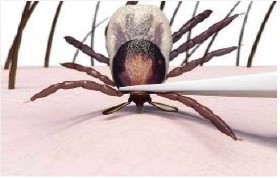 Dana Parish: That’s totally unacceptable. There’s no science to back that up. All that will do—at best—is prevent you from getting the bullseye or EM Lyme (Erythema Migrans) rash. You’ll have even less support for a longer course of treatment without that. So, there’s absolutely no basis for that. And I would say that even as in my case, a lot of people don’t get well with three weeks of doxycycline. So, my strong advice and Dr. Phillips’s advice, and if Dr. Neil Spector were here, he would back me up on this. You want to treat it at the bite stage. If you see a tick bite, if you see a tick and you pull it out, you want to go right away and get antibiotics that day. You don’t even want to wait 24 hours as pathogens can disseminate. It’s just not a good idea. I say go for the whole three weeks of doxycycline right up front before you get a rash. If you get a rash, yes, it should be treated with three weeks of doxy, but I think it’d be best to then go and see a specialist right away and not be like me floundering for five months until your whole body potentially goes haywire. It’s just so common. If I was in a rare minority, I wouldn’t give that advice. It’s just that it’s really, really, really common. I think more is more in the beginning to prevent problems. This is really standard infectious disease stuff to treat early and treat aggressively, and yet Lyme is held to a different standard, and it shouldn’t be. These infections can take everything from you, and they can even take your life. So yeah, I strongly feel it’s important to get much more treatment upfront. I wish I had done so. I wish I knew better then,
Dana Parish: That’s totally unacceptable. There’s no science to back that up. All that will do—at best—is prevent you from getting the bullseye or EM Lyme (Erythema Migrans) rash. You’ll have even less support for a longer course of treatment without that. So, there’s absolutely no basis for that. And I would say that even as in my case, a lot of people don’t get well with three weeks of doxycycline. So, my strong advice and Dr. Phillips’s advice, and if Dr. Neil Spector were here, he would back me up on this. You want to treat it at the bite stage. If you see a tick bite, if you see a tick and you pull it out, you want to go right away and get antibiotics that day. You don’t even want to wait 24 hours as pathogens can disseminate. It’s just not a good idea. I say go for the whole three weeks of doxycycline right up front before you get a rash. If you get a rash, yes, it should be treated with three weeks of doxy, but I think it’d be best to then go and see a specialist right away and not be like me floundering for five months until your whole body potentially goes haywire. It’s just so common. If I was in a rare minority, I wouldn’t give that advice. It’s just that it’s really, really, really common. I think more is more in the beginning to prevent problems. This is really standard infectious disease stuff to treat early and treat aggressively, and yet Lyme is held to a different standard, and it shouldn’t be. These infections can take everything from you, and they can even take your life. So yeah, I strongly feel it’s important to get much more treatment upfront. I wish I had done so. I wish I knew better then,
Jo Ellis: Dana, thank you so much for spending this time to talk about this today. It was really great to learn about your Lyme story and I hope that other people find this helpful, are inspired to advocate for themselves and not give up hope when trying to get the right treatment for their chronic diseases.
Dana Parish: It was my pleasure. Thanks for inviting me. Bye for now!
Jo Ellis: Goodbye!
This blog is part of our BAL Spotlights Series. Bay Area Lyme Foundation provides reliable, fact-based information so that prevention and the importance of early treatment are common knowledge. For more information about Bay Area Lyme, including our research and prevention programs, go to www.bayarealyme.org.

WOW! This is my true story. Just so relatable. This whole disease has left me with PTSD!!! Thank you for sharing this!